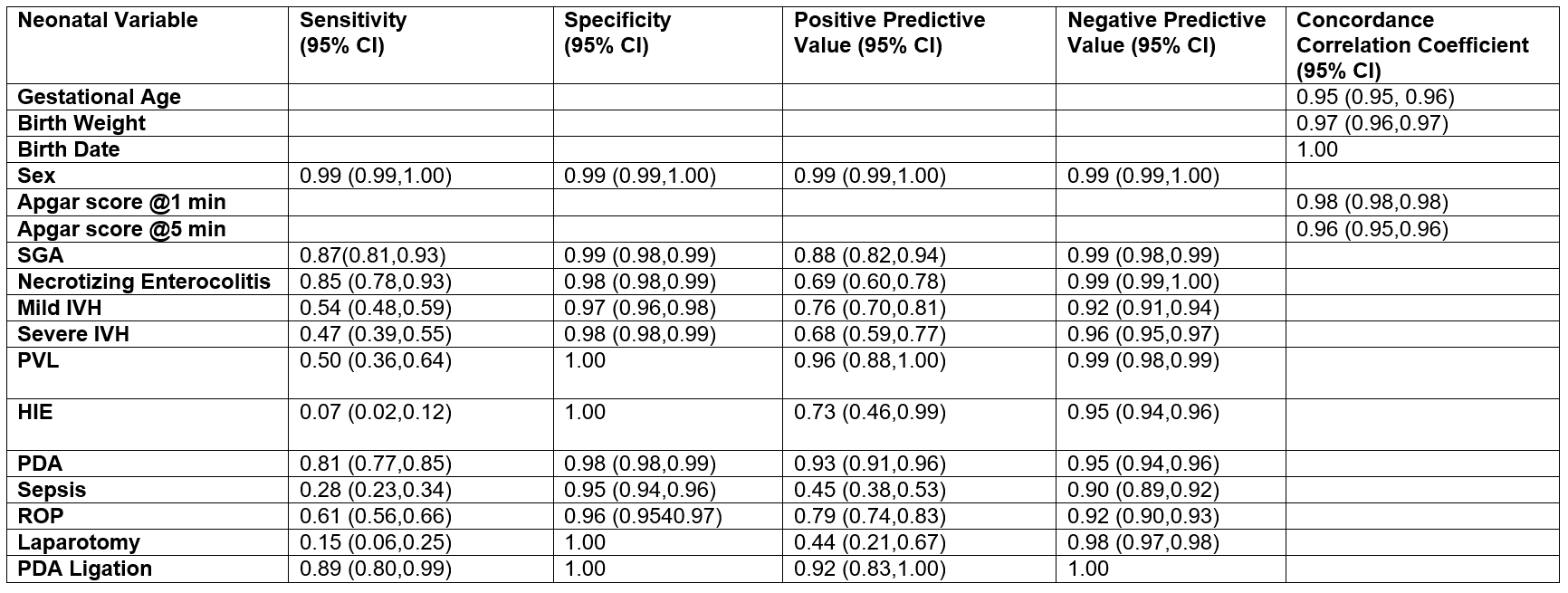Neonatal General
Neonatal General 10: Outcomes
69 - Validation of Discharge Abstract Database Data to Promote Long-Term Outcomes Research of Individuals Born Preterm in Canada
Publication Number: 69.429

DEEPAK LOUIS, MD, DM (he/him/his)
Assistant Professor
Max Rady College of Medicine, Rady Faculty of Health Sciences, University of Manitoba
Winnipeg, Manitoba, Canada- PE
Peace Eshemokhai, M.B.,B.S. (she/her/hers)
Resident
University of Manitoba
Winnipeg, Manitoba, Canada
Presenting Author(s)
First Author(s)
Background:
In Canada, about 8% of livebirths are born preterm. Compared to their short and medium-term morbidities, relatively little is known about the adulthood outcomes of individuals born preterm. Administrative data available in Canada provides excellent opportunities to longitudinally follow a population-based cohort of children in to adulthood. However, it is imperative that the validity of such administrative data be established before embarking on such follow-up studies.
Objective:
To validate preterm birth-related maternal and neonatal data available in the Discharge Abstract Database (DAD) against the Canadian Neonatal Network (CNN) database (reference standard).
Design/Methods:
The CNN database is a national database that includes data for all preterm neonates born < 33 weeks gestational age admitted to all the 33 Neonatal Intensive Care Units (NICU) across Canada. The CNN is considered the gold standard for preterm neonatal data in Canada. The DAD is another database that captures administrative, clinical and demographic information on all hospital admissions in Canada including preterm births. For validation, we assembled a cohort of all preterm neonates born < 33 weeks gestational age and were admitted to the two NICUs in Winnipeg, Manitoba, Canada between January 1, 2010 and March 31, 2022. Their maternal and neonatal data had to be available and linkable between the DAD and CNN databases for inclusion. Data was retrieved from the Manitoba Centre for Health Policy (MCHP), the administrative database in the province of Manitoba. The validation was done for maternal and neonatal variables using the following: for categorical variables, we calculated sensitivity, specificity, positive predictive value, negative predictive value and Cohen’s weighted kappa; for continuous variables, we used Lin’s Concordance Correlation Coefficient and Bland-Altman plots.
Results:
A total of 2084 neonates were eligible. We found that neonatal baseline variables (such as birth weight, gestational age) had high validity compared to outcome variables. Medical procedures and maternal morbidities such as gestational diabetes and hypertension had low validity (See Tables 1 & 2).
Conclusion(s):
The demographic data in the DAD was accurate while neonatal and maternal morbidity data was less accurate.

